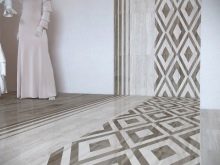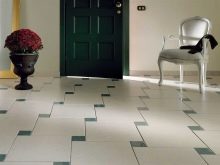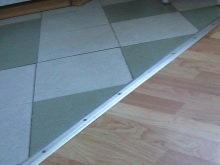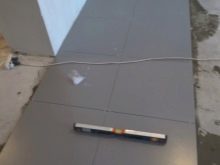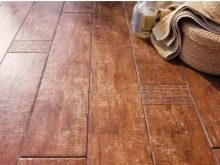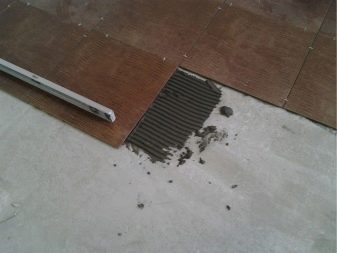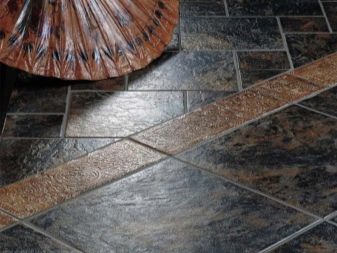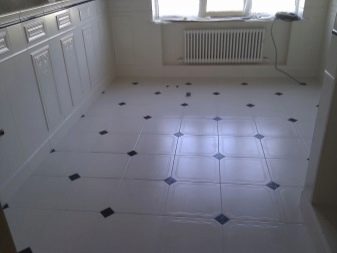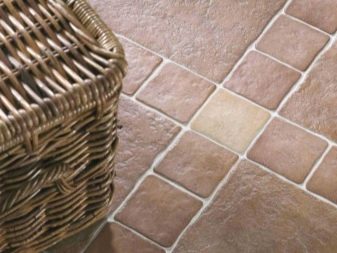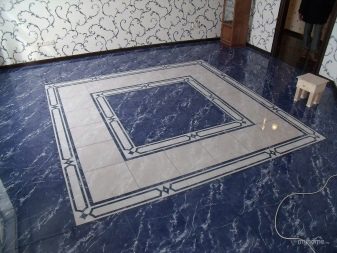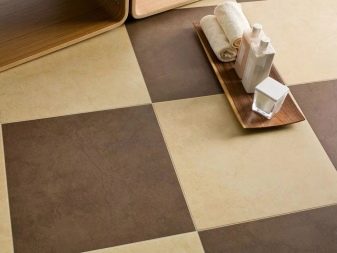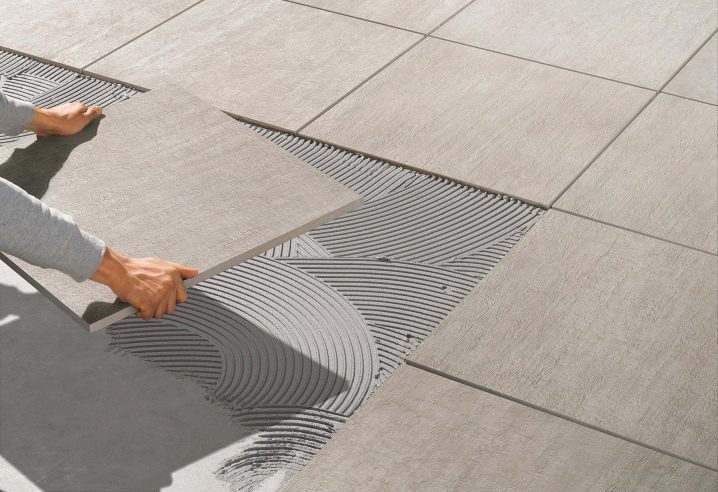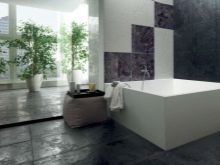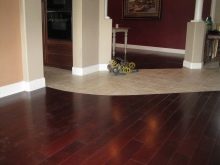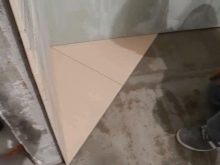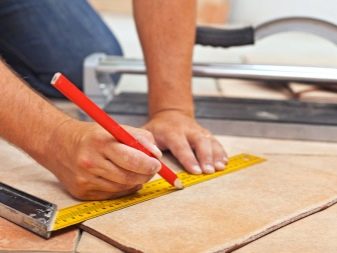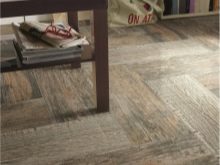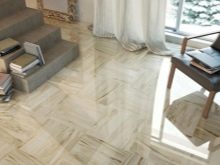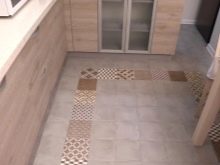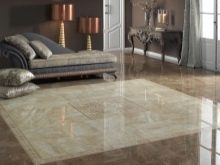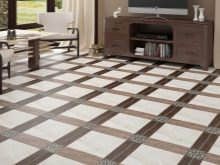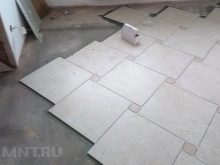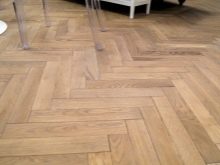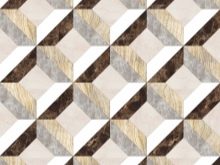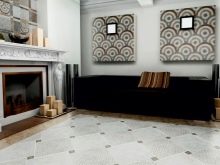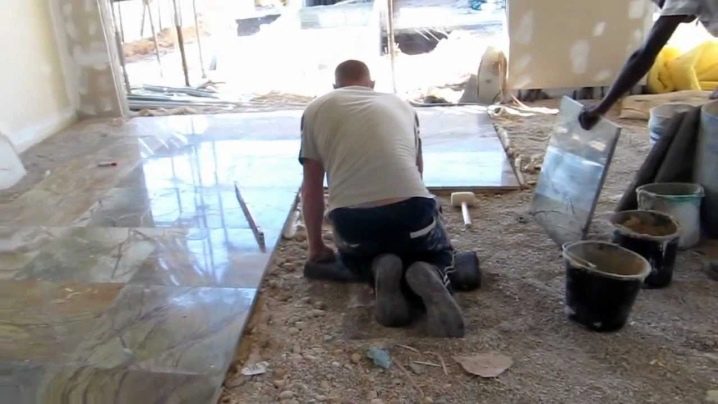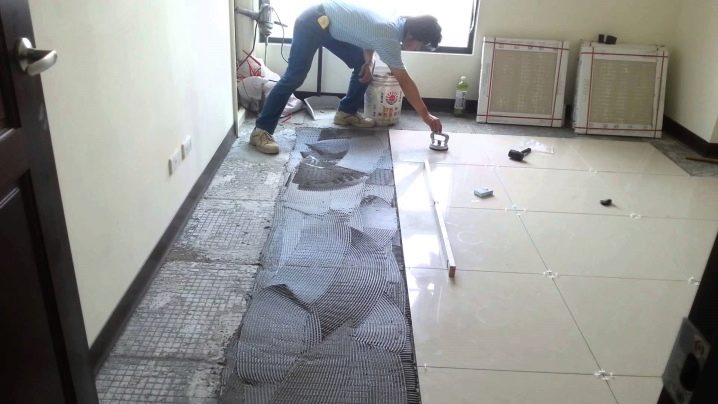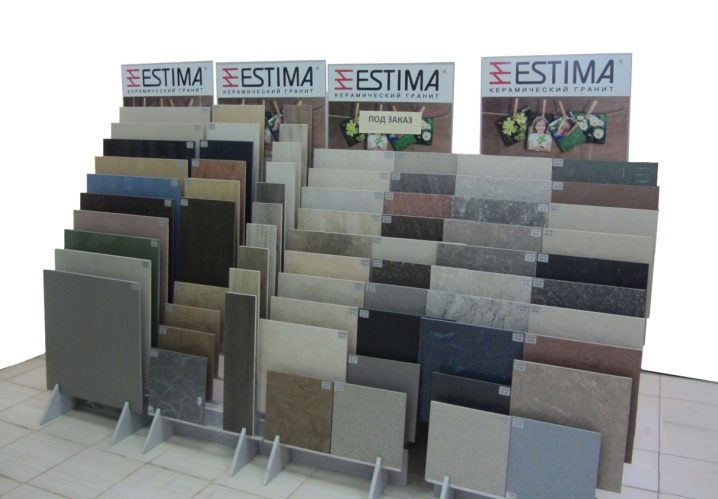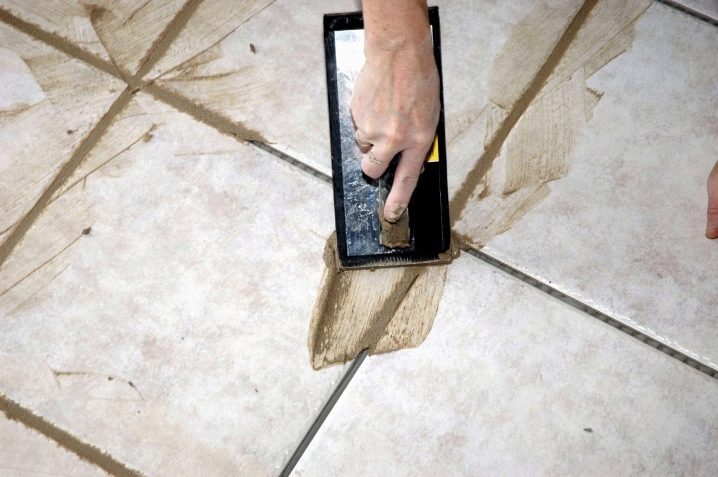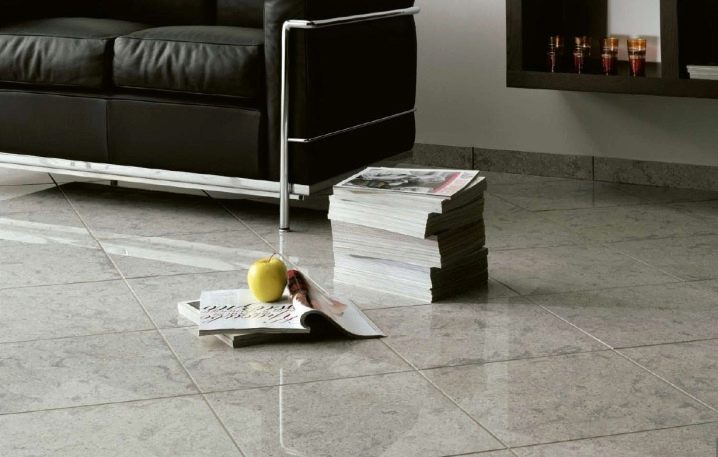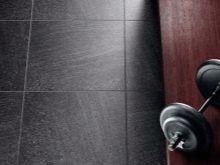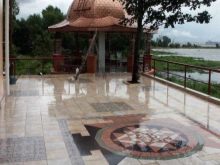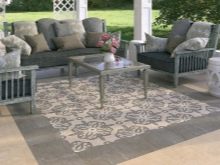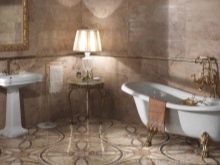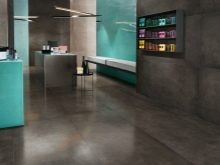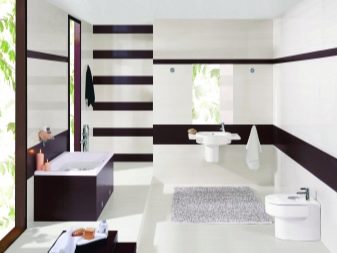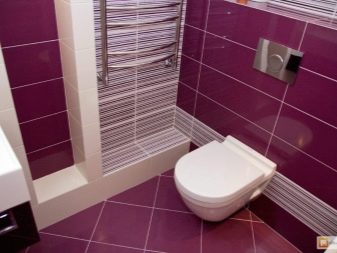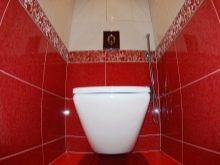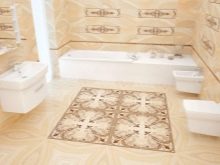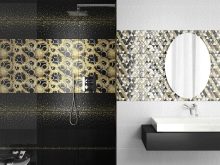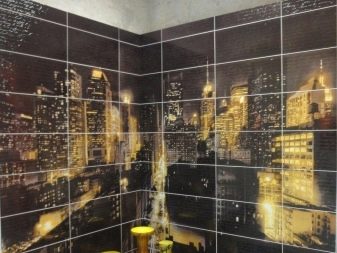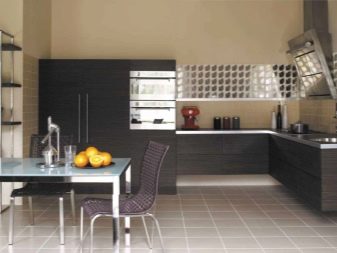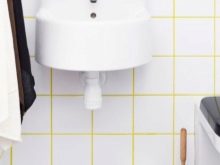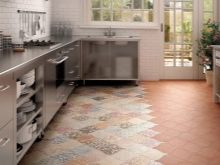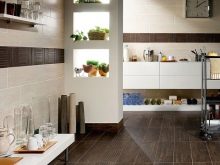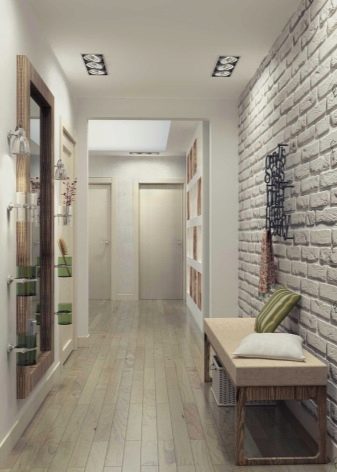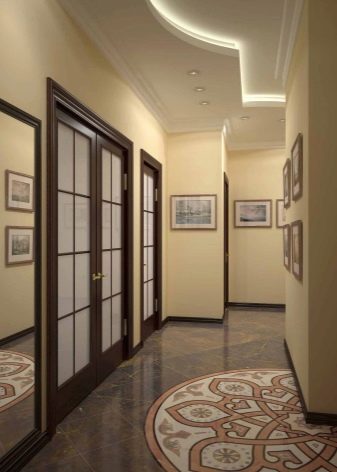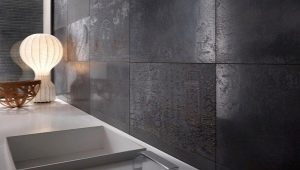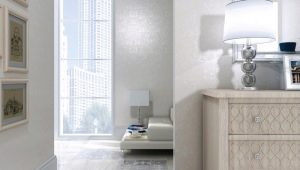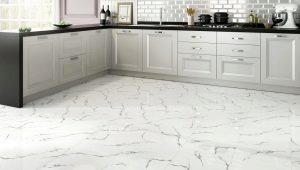The technology and methods of laying porcelain
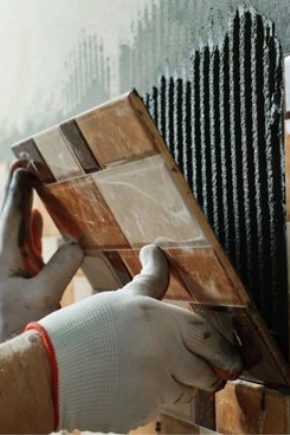
Porcelain tile is considered the most popular building material that can be used for interior and exterior. It is made in different colors and texture. This tile imitates natural wood and stone well, so it is often used to decorate not only walls, but also the floor and ceiling.
Due to high quality and enhanced performance porcelain tile is recommended for laying in rooms with temperature changes and humiditytherefore, it can be found in the interior of kitchens, bathrooms, balconies and loggias. Installing a tile is not difficult, even a novice master can handle it.
Special features
Porcelain tile is made from such natural materials as quartz sand, kaolin, clay and feldspar. Tiles are phased and subjected to firing at high temperatures, therefore, unlike other finishing materials, is characterized by durability and long service life. In addition, the structure of the tile is unique, it is excellent against moisture, and the coating can withstand extreme cold. If we consider the advantages and disadvantages, then the main advantages of the product include:
- Aesthetic look.
- Reliability.
- Damage resistance. The tile is not afraid of water and withstands chemical attack.
- Easy installation.
Despite the many positive characteristics, porcelain has a number of disadvantages, namely:
- Cold floor. The tile can be insulated only by installing an additional heating system.
- High price.
In addition, the laying of porcelain tiles requires strict implementation of technology. Before starting the installation work, it is necessary to prepare everything: it concerns not only the choice of material, but also the leveling of the surface. The installation scheme, as a rule, depends on the size and properties of the tile.
For finishing, it is recommended to purchase porcelain stoneware from the same manufacturer, as it may differ in density and color. It is also undesirable to use cement mortars when working. it is best to replace them with adhesives, which will ensure maximum adhesion of the tile to the surface.
The main feature of laying porcelain stoneware is considered the preliminary preparation of the place of finishing - it must be thoroughly cleaned and irregularities and defects removed. The device of the material allows installation in various ways, without leaving large gaps. Therefore, if at the end of the work small seams with a thickness of 2 to 6 mm remain, they can be filled with colored grout, which will increase the level of strength and give the scenery a beautiful look. Particular attention should also be paid to the selection criteria of the material, which take into account the characteristics of the room.
If the room is unstable temperature conditions and high humidity, then you should choose a special glue and highly elastic tiles with durability.
Necessary tools and accessories
Any finishing work begins with the preparation of the necessary raw materials and tools,is no exception to this and the installation of porcelain. To perform high-quality tile laying, you need the following:
- "Bulgarian" or tile cutter.
- Putty knife. Since in the process of finishing the various stages of installation and grouting will be carried out, it is necessary to have a notched and even trowel.
- Plastic Malka.
- Hammer.
- Drill with a special nozzle or construction mixer.
- Marker.
- Capacity for glue.
- Square.
- Roller.
- Roulette.
- Machine.
In addition, an additional need for grouting for joints, primer solution, plastic crosses. In the event that the working surface has flaws, they must be corrected. For this you need to prepare a cement mortar and make a screed. Installation of porcelain stoneware on the floor is carried out after the laying of hydro and thermal insulation, so you will also need a special substrate, a metal profile and clamps.
Smooth base grind machine. That the tile was well fixed on a surface, great attention should be paid to the choice of adhesive mixture. Today in the construction market you can find polyurethane, dispersion and cement glue.Each of them differs in composition and properties. Thus, it is best to buy polyurethane glue for interior decoration, epoxy resin-based mixtures are suitable for wet rooms, and cement mortar is considered the most economical option.
How to lay?
Laying porcelain stoneware is considered an uncomplicated type of finishing work, but if you do it yourself, without the help of experts, you will need to adhere to a special technology and follow the sequence of processes. This can help step by step instructions for self-installation of tiles, consisting of the following steps:
- Training. First of all, they check the surface on which they will lay the porcelain stoneware. If on the basis there are significant bumps, abrupt transitions and irregularities, the installation cannot be performed immediately. In this case, is made of cement screed and lining, after which you can lay tile.
- Markup. When the lining is completely dry, they determine the center of the room. A special technology is used for this, along which four lines are drawn: two diagonally and two perpendicular to the walls.
- Making adhesive solution. The mixture should be of a uniform consistency, so it is important to follow the rules of mixing, adhering to the instructions indicated on the package. In addition, you need to know which mixture to choose for work, because for each room it may be different.
- Installation. Installation starts from the center of the room. The prepared glue is applied on the tile base and is evenly distributed with a notched trowel. The thickness of the layer depends on the size and density of porcelain stoneware, that is - the larger the product, the thicker the layer of glue. Then the tile is installed on the surface, well pressed with pulp and knock on it with a hammer.
- Grout. For the complete drying of the glue, it is given no more than a day, then a corrective putty is prepared, using a rubber spatula, it is applied between the tile joints.
The layout of the material can be done in various ways, but most often the masters use the deck method. He allows to perform quickly work, and the surface turns out without seams. The installation methods for long porcelain stoneware imitating natural wood are different, resembling laminate flooring.After the first tile is laid, you need to check the correctness of its location with the help of dimensions and level: if everything is done without errors, the second tile is installed next to it and the plastic sacrum is fixed.
Installation is performed from the center of the room, moving to the walls.. In this case, after each laying of the material, it is necessary to remove residual glue. The installation is completed at the walls, so often the last row of tiles must be cut.
Kinds
Porcelain is considered a unique finishing material, it looks beautiful in the interior of the housing, and it can be installed on any surface. In order for a decorative tile to fit into the general appearance of the room as much as possible, you need to choose the type of its installation, for which it is necessary to take into account the shape and size of the room. To date, the most popular ways to install porcelain are:
- Traditional. The tile is located closely to each other along a parallel, creating even rows. Such a clutch looks originally, if you simultaneously use several colors. Installation is quick, but requires a smooth base and high-quality tiles.
- Diagonally. This is the most beautiful and difficult way to install porcelain. For it, it is necessary to do the markings of the axes correctly and to cut the tile. As a rule, diagonal masonry is chosen for cladding small and non-standard surfaces. Since the picture should be placed at an angle of 45 degrees, it is recommended to purchase square ceramic granite for installation.
- With offset. Externally, the method has similarities with brickwork, and it is used to finish the floors in the hallway and in the kitchen. Beautiful pattern can be laid out both rectangular and square tiles.
- Herringbone. Porcelain tile is laid in the form of floorboard.
- Modular. Before installing the coating is a preliminary draft of the figure, and only then work is done. This option is good for decorating small rooms.
- With a shift. Allows you to create beautiful patterns, embodying in reality any design ideas.
A place
Ceramic granite is used for both exterior and interior decoration. In this case, this material is very popular in the arrangement of flooring.Unlike conventional tiles, it is characterized by increased durability, therefore it is well suited for flooring in rooms with any humidity and temperature conditions.
Often, owners of secondary housing get apartments with wooden floors, which have an unaesthetic appearance and do not fit into the design of the room. To remedy this situation, the master recommends laying ceramic granite on a wooden floor.
Before the start of installation work, you need to check the floorboards: if they bend and creak, then you will need to remove the backing and the top layer. The boards are dismantled using a nail catcher, after which new lags are laid horizontally and a leveling mortar is poured. Wherein it is necessary to treat the wood with antiseptic, and fill the space between the windows with expanded clay.
On top of the primary coating lay hydro and vapor barrier, attach the base and perform laying tiles. As the base, you can use sheets of moisture-resistant drywall or cement boards. Sheets are fixed with screws, and perform control of the joints, which are located above the boards.
If the porcelain stoneware needs to be laid on a wooden surface in the bathroom,it is necessary to make high-quality waterproofing and seal up all the joints between the walls and the floor with mounting foam. You can make a good insulation of polymer rubber, it is cut into strips 30 cm wide and glued with a special sealant.
Often laid porcelain and plywood. To do this, it is attached to the logs, while its thickness should not exceed 30 mm. Sheets of plywood tightly fixed to the frame, polished and carefully close up all the seams.
If the installation of tiles must be performed in rooms with a concrete floor, where humidity is constantly observed, pre-waterproofing is done, and the joints are sealed with sealant. Porcelain stoneware tile also looks perfect on a concrete staircase, it can be immediately installed on the surface of concrete, using a leveling glue for fixing. Since porcelain tile is not characterized by high thermal insulation, choosing it for finishing the floors in the toilet or bathroom, it is recommended to install an additional system with heating.
To the surface of the base was perfect, it is best to level the bulk solution. All communications and cables are hidden under the leveling compound so that there are no empty places left, otherwise the tile may peel off.
Ceramic granite is also used in the decoration of walls.Before you install the tile on the wall, you must similarly check its base for defects, and if any, level the surface. For better fixation of the wall material primer.
Dimensions
Porcelain tile is produced in the form of rectangular or square tiles. A huge role in the selection of this finishing material play sizes. Not only tile thickness, but also its strength, as well as price, will depend on their performance. Today, the construction market is represented by a wide range of porcelain tiles, ranging from a format 50 × 50 mm and ending with 2-3 meters.
If you need to put the tile yourself, then it is best to choose products with parameters of 30 × 30 cm, They are the most common and economical. So porcelain tiles make flooring in offices and shopping centers. The thickness of this format is 7-9 mm. For large rooms, where people are constantly observed, a tile of 30 × 30 cm with a thickness of 8 mm will suit. It is characterized by high performance properties and withstands mechanical loads.
The format 60 × 60 cm is not less popular, it is acquired for finishing work outside.This tile is perfectly combined with suspended systems, so it is used as a ceiling and floor coverings in shopping centers and airports. Intermediate option is considered to be 40 × 40 cm porcelain, it is produced much less frequently, and it is expensive.
In case it is necessary to lay out a porcelain stoneware drawing, it is recommended to choose tiles with dimensions of 30 × 60 cm. This format was specially developed by designers. Tiles of 20 × 20 cm format are also on sale; they are called “industrial”, as they are used for finishing industrial premises. It is resistant to chemical attack and can withstand any temperature conditions.
As for the large-sized porcelain tile 80 × 80 cm, 1 × 1 m, it is a unique option for creating an unusual design. This tile is laid as a cladding of facades, so it adorns the walls in spacious rooms.
Decor
Porcelain tile is a beautiful design element, and to make the interior of the room stylish and elegant, the tiles need not only to lay out patterns, but also to complement it with decor. The most popular type of decoration is a panel of porcelain.It is used in the decoration of walls, ceiling and flooring. Often the panel can be found in kitchens and bathrooms with images of marine themes, fruits and flowers.
The choice of ceramic granite tiles is large, therefore, creating decorative compositions, it is recommended to use several colors at the same time. Unusually looks tile, lined with herringbone. In addition, porcelain tiles can be installed in the form of original geometric shapes. Regardless of which coating is chosen for finishing, it must have a complete imageTherefore, in addition, in addition to the tile, borders and frames are used in the design. The original solution will be laying of porcelain tile with various inserts.
Tips and tricks
Decorative tiles made of porcelain stoneware are in great demand in the design of modern design, so if homeowners are planning to perform regular repairs, it will be considered an ideal finishing material. Since the installation of the product is not particularly difficult, it can be done independently, Adhering to the following recommendations:
- Begin editing with the preliminary sketching.On them it will be possible to see the possibility of symmetry patterns. In addition, ready-made schemes will simplify the styling process.
- Glue is prepared in small portions. The adhesive mixture is thoroughly mixed until a uniform consistency is formed, excluding the formation of air bubbles. Glue is applied in a uniform layer using a notched trowel. The correct placement of porcelain tiles is controlled by the construction level.
- During installation, you must constantly check the tightness of the tile to the surface. If voids are obtained, the material will crack during operation.
The distance between the elements should not exceed 3 mm, in the case where edged ceramic granite is used, the seams can reach 1 mm.
- The laid coating dries for 3-4 days, after which you can walk on it, subject it to mechanical loads. If the glue does not dry completely, the tile will shift, and its aesthetic appearance will be spoiled.
- At the end of the installation work necessarily done grouting. To maximize the effect of the decor, choose a colored grout. It should match the shade of the tile and cover the entire width of the seam.The grout is applied with a rubber spatula, which is used to strip excess glue.
- After laying porcelain stoneware, an assessment of the quality of work is done. If the surface of the floor covering has no cavities and protuberances, looks like a single composition, then the installation is done correctly.
Successful examples and options
Porcelain tile has high performance, so it can be used for decoration of any premises. Especially beautiful looks such tiles in the interior of the bathroom and toilet. As a standard, square and rectangular tiles are chosen for the design of these rooms, with the latter being suitable for decorating walls.
For the design of the bathroom, you can choose a different palette of porcelain, the original look contrasting compositions that combine several shades at the same time. It is beautiful to make the top light and the bottom dark. Special attention is given to complex drawings and patterns laid out of the tile.
To the interior in the bathroom harmoniously with the other elements of the decor, you need to choose sandy, turquoise, blue or red for decoration.The room in which the white and red tiles will be used will be stylish. It is also considered to be fashionable black shade, complemented by gold, greens or orange colors.
For small rooms, it is best to choose light shades, and lay tiles using a seamless technique.
A stylish solution for the bathroom and toilet is the installation of porcelain tile in the form of panels. Thanks to the spectacular drawings, the rooms become beautiful and there are no borders in space. Making the kitchen, porcelain can be laid on the walls and floor. For the flooring, you can choose a tile of warm color, and decorate the walls with unusual compositions consisting of rectangular details and mosaic fragments.
The original solution will be a white shade of porcelain tile in combination with a bright grout. In the kitchen, the tile, laid out in the form of multi-colored steps or panels, looks unusual. As for the flooring, for it the best option would be a porcelain stoneware, imitating laminate or parquet.
Installing porcelain tiles in the hallway, you need to focus on the size of the room and design style.Dark shades will reduce the space, and light, on the contrary, it will visually expand.
A good choice for the hallway will be granite, imitating natural stone or wood. Brown and chocolate tones tiles will be well combined with furniture and fill the room with a cozy atmosphere. In this case, the flooring can be laid out in a single color, and combine in the composition of several textures and colors.
How to lay ceramic granite, see the next video.
